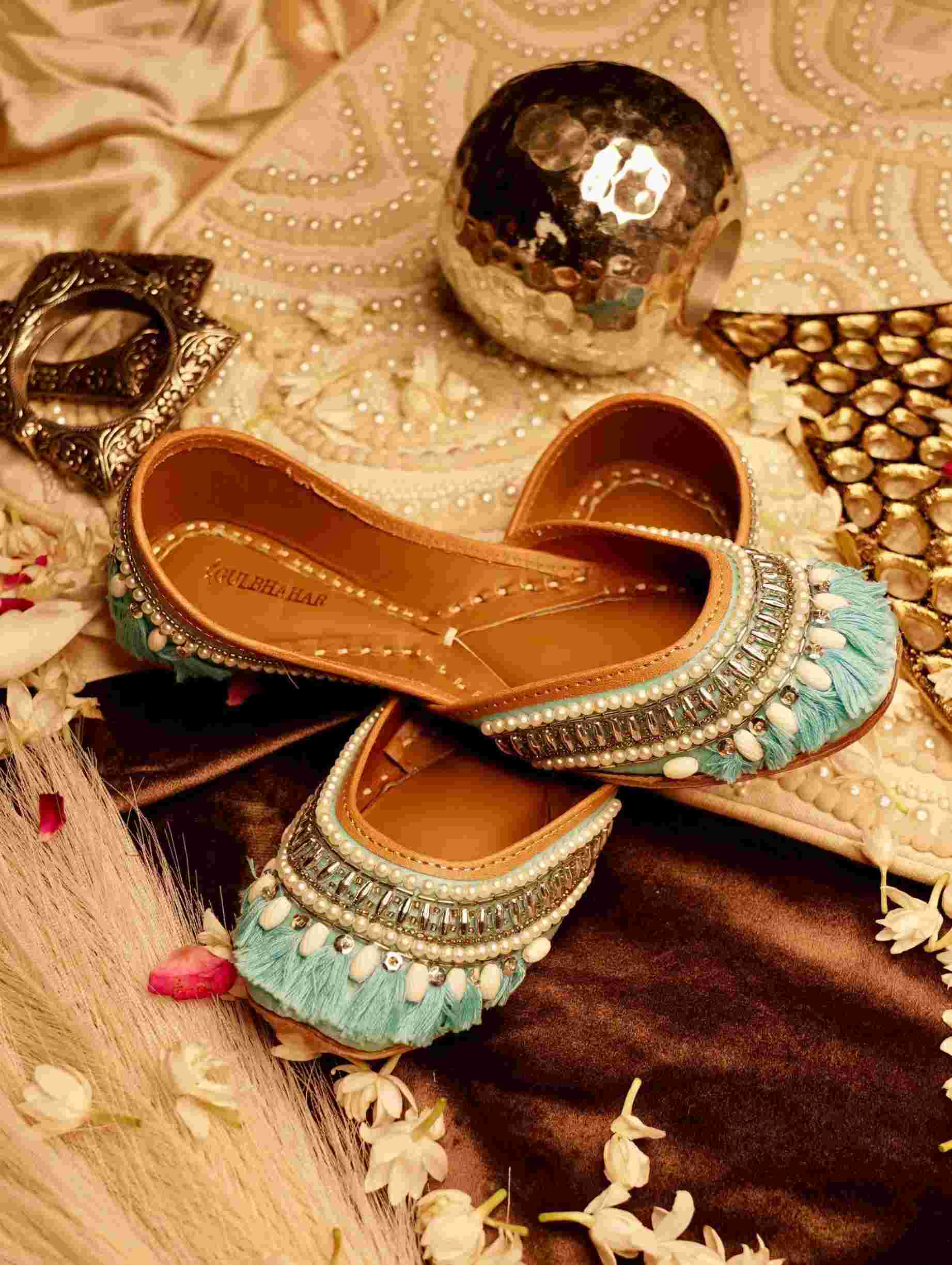Every authentic jutti carries a story that machines can never articulate. Weeks of meticulous handiwork, generations-spanning techniques passed on from ancestors, and sure hands of master craftsmen who mold raw leather into wearable poetry are all hidden behind every pair. Handmade juttis by Gulbhahar are the height of ancient footwear craftsmanship, where ancient methods get intermingled with contemporary sensibilities to create something out of this world.
The Artisan’s Holy Morning Ritual
Hours before dawn break over the workplaces, master craftsmen begin morning ritual of leather picking. This very first step separates the great juttis from mortals. Experienced hands probe every hide, trying on for natural grain texture and suppleness and inquiring about the leather’s potential for aging well. Handmade juttis only have space for the best leather that is alive, responsive to touch, and develops character with years.
The selection process demonstrates the artist’s deep understanding of the art. They can find the spots on a hide that will produce the perfect toe shape, where to find the optimal highest endurance for the heel, and where the natural markings will add to the finished design. All of this long-acquired knowledge cannot be transferred to machines or rushed through production quotas.
Pattern Making: Geometry Meets Intuition
Handmade juttis by Gulbhahar require a unique synthesis of mathematical precision and creative intuition. Experienced pattern-makers develop their patterns over several years of trial and error and development, understanding the way leather behaves when it is stretched, bent, and stitched. Each pattern piece must accommodate the inherent nature of the material without adjusting the silhouette of the jutti.
Handmade juttis rely on styles worked out over generations, with minute changes passed on through apprentice systems. These patterns are a pooled wisdom. They involve hours and hours of trial and error, adjustment and shaping reduced to precise measurements and flowing lines.
The Dance of Needle and Thread
Hand-stitching transforms pieces of leather into living shoes. While machine stitching extracts stiff, regular seams, handwork introduces soft irregularities which allow handmade juttis to flex comfortably with each step. Each stitch is placed with care, its tension fine-tuned so that it does not intrude on comfort but gives strength.
The vintage cobbler stitch employed in authentic jutti-making has seams that actually get better with time. Since the leather elongates and shapes to the contours of the foot, such hand-set stitches naturally adjust, adding to the ease of comfort that distinguishes authentic handcraft from mass-produced fakes.
Embellishment: The Expression of the Soul
The process of embellishment turns functional shoes into art museums. With the best embroidery, precise arrangements of mirrors, or intricate beadwork patterns, craftspeople work on each handmade jutti as an individual canvas for creative expression. There are minor differences in colour placement, stitch tension, or pattern alignment with each pair so that every pair is one-of-a-kind, something that a machine cannot achieve.
And ultimately
The last step of assembling juttis is an artful coordination of several components. The top should wed the sole in flawless harmony to provide structural strength as well as sharp and small points to the jutti. Quality control becomes an act of performative art, using the trained eye of the artisan to point out defects that machines and drones might miss.
Thus, handmade juttis by Gulbhahar are designed to carry something invaluable. The essence of human touch, which transforms shoes into a cultural work of art, giving every pair its own soul and tale.

